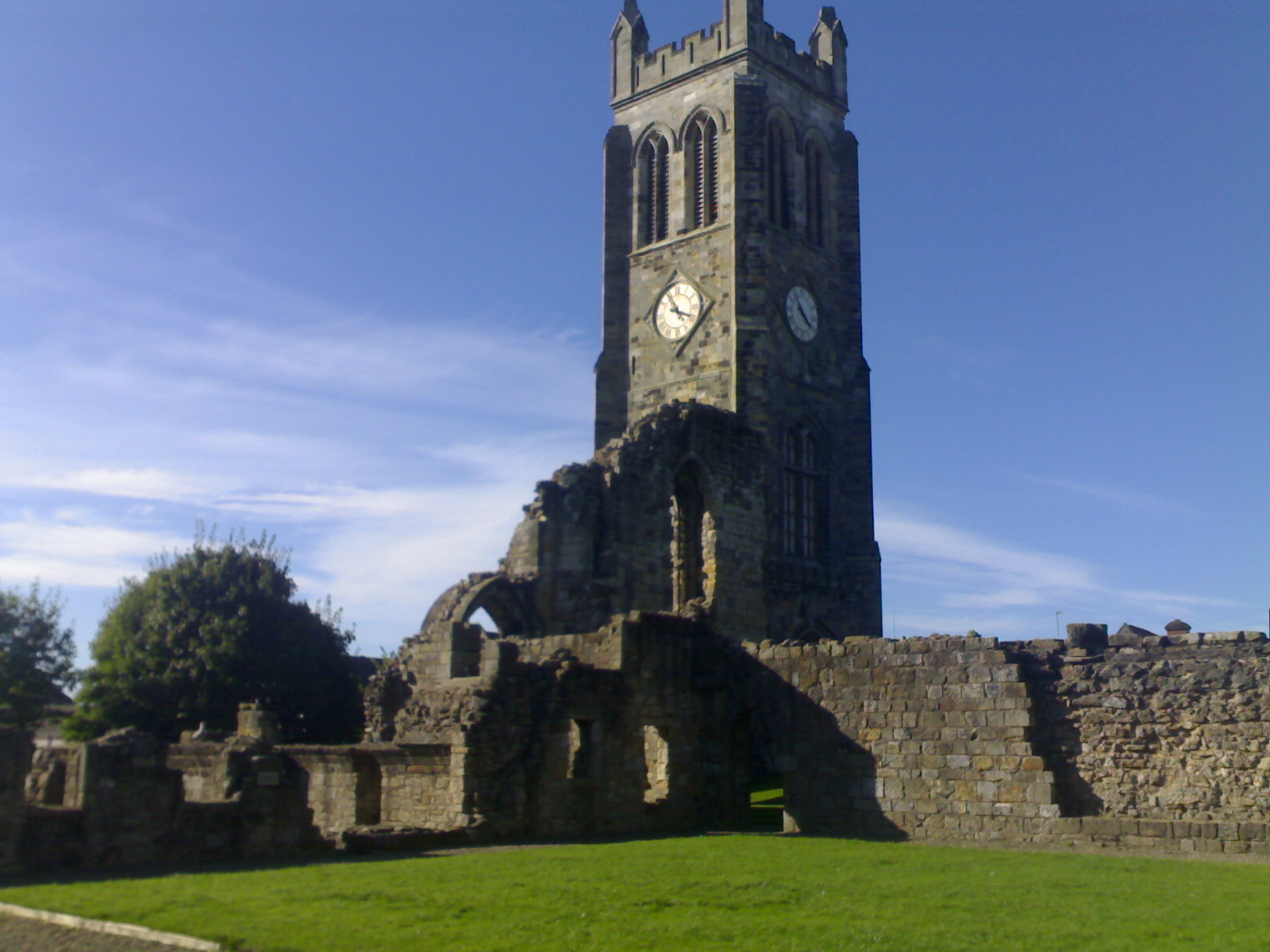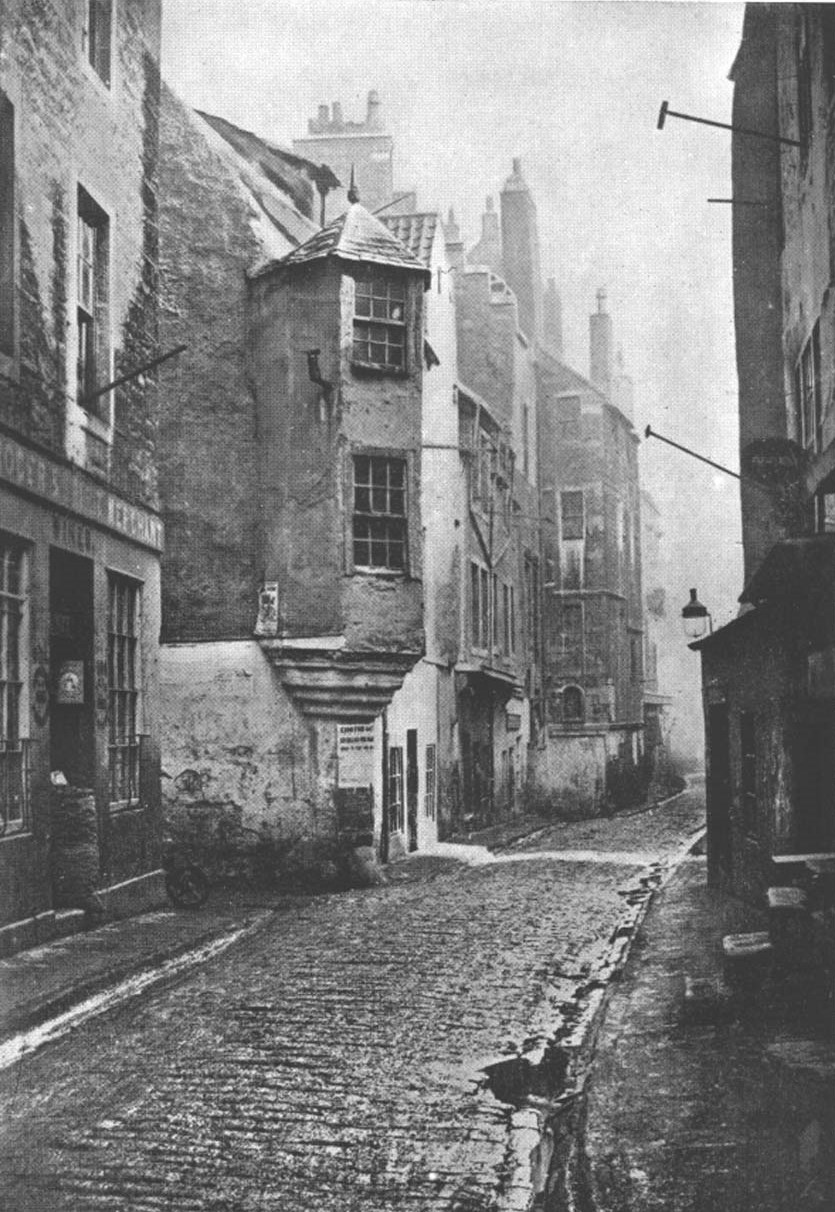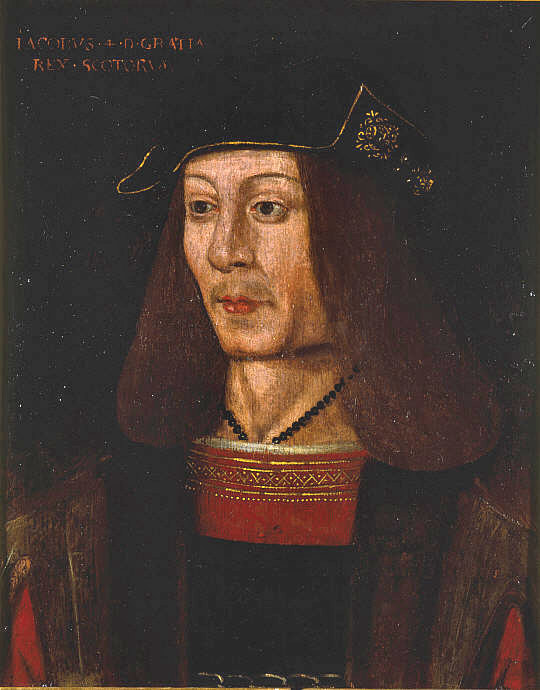|
Abbot Of Arbroath
The Abbot of Arbroath or Abbot of Aberbrothok (and later Commendator) was the head of the Tironensian Benedictine monastic community of Arbroath Abbey, Angus, Scotland, founded under the patronage of King William of Scotland from Kelso Abbey and dedicated to St Thomas of Canterbury, Thomas Becket. The abbot, John Gedy, was granted the mitre on 26 June 1396. Arbroath Abbey became the wealthiest and most powerful abbey in later medieval Scotland. According to the poem "The Inchcape Rock" by Robert Southey, John Gedy, then Abbot of Aberbrothok, fixed a bell to the inchcape rock in the 1300s to warn mariners of the perilous rock. The following is a list of abbots and commendators. *Reginald, 1178–79 *Henry, 1179–1207 *Gilbert, 1208–19 x 1229 *Radulf de Lamley, 1225–39 *Adam, 1240–46 *Walter, 1247–58 x *Robert, 1261–67 *Sabinus, 1267 ? *John, 1268–70 *William, 1276–84 *Henry, 1285–96 *Nicholas, 1296 x 99-1301Became Bishop of Dunblane. *John de Anegus, 1303–09 ... [...More Info...] [...Related Items...] OR: [Wikipedia] [Google] [Baidu] |
Arbroath Abbey Seal 01
Arbroath () or Aberbrothock ( gd, Obar Bhrothaig ) is a former royal burgh and the largest town in the council area of Angus, Scotland, with a population of 23,902. It lies on the North Sea coast some ENE of Dundee and SSW of Aberdeen. There is evidence of Iron Age settlement, but its history as a town began with the founding of Arbroath Abbey in 1178. It grew much during the Industrial Revolution through the flax and then the jute industry and the engineering sector. A new harbour created in 1839; by the 20th century, Arbroath was one of Scotland's larger fishing ports. It is notable for the Declaration of Arbroath and the Arbroath smokie. Arbroath Football Club holds the world record for the number of goals scored in a professional football match: 36–0 against Bon Accord of Aberdeen in the Scottish Cup in 1885 History Toponymy The earliest recorded name was 'Aberbrothock', referring to the Brothock Burn that runs through the town. The prefix ''Aber'' derived either f ... [...More Info...] [...Related Items...] OR: [Wikipedia] [Google] [Baidu] |
Bernard Of Kilwinning
Bernard (died c. 1331) was a Tironensian abbot, administrator and bishop active in late 13th- and early 14th-century Scotland, during the First War of Scottish Independence. He first appears in the records already established as Abbot of Kilwinning in 1296, disappearing for a decade before re-emerging as Chancellor of Scotland then Abbot of Arbroath. A senior figure in the administration of Scotland during the 1310s and 1320s, he is widely said by modern writers to have drafted the Declaration of Arbroath, and although there is no direct evidence for this, he nevertheless probably played a role. By early 1328, his service to the king had earned him a bishopric – the bishopric of the Isles – a position he held for three or four years before his death in 1331. Abbot of Kilwinning The name "Bernard abbe de Kilwynin" (abbot of Kilwinning) occurs on the Ragman Rolls, 28 August 1296, and he is recorded again in a document of Melrose Abbey on 25 December.Watt & Shead, ' ... [...More Info...] [...Related Items...] OR: [Wikipedia] [Google] [Baidu] |
Esmé Stewart, 1st Duke Of Lennox
Esmé Stewart, 1st Duke of Lennox, 1st Earl of Lennox, 6th Seigneur d'Aubigny, (26 May 1583) of the Château d'Aubigny at Aubigny-sur-Nère in the ancient province of Berry, France, was a Roman Catholic French nobleman of Scottish ancestry who on his move to Scotland at the age of 37 became a favourite of the 13-year-old King James VI of Scotland (and later I of England), of whose father, Henry Stewart, Lord Darnley (son and heir apparent of Matthew Stewart, 4th Earl of Lennox), he was a first cousin. Despite his conversion to Calvinism he was never trusted by the Scots and returned to France where he ended his days. Sir James Melville described him as "of nature upright, just and gentle". He was the first to popularise the firstname Esmé (spelt also Edme, etc.) in the British Isles. Early life He was the son and heir of John Stewart, 5th Seigneur d'Aubigny (d. 1567), by his wife Anne de la Queuille, a French noblewoman. His father was the third son of John Stewart, 3rd Ear ... [...More Info...] [...Related Items...] OR: [Wikipedia] [Google] [Baidu] |
Bishop Of Moray
The Bishop of Moray or Bishop of Elgin was the ecclesiastical head of the Diocese of Moray in northern Scotland, one of Scotland's 13 medieval bishoprics. If the foundation charter of the monastery at Scone is reliable, then the Bishopric of Moray was in existence as early as the reign of King Alexander I of Scotland (1107–1124), but was certainly in existence by 1127, when one Gregoir ("Gregorius") is mentioned as "Bishop of Moray" in a charter of king David I of Scotland. The bishopric had its seat ( la, Cathedra) at Elgin and Elgin Cathedral, but was severally at Birnie, Kinneddar and as late as Bishop Andreas de Moravia at Spynie, where the bishops continued to maintain a palace. The Bishopric's links with Rome ceased to exist after the Scottish Reformation, but continued, saving temporary abolition between 1638 and 1661, under the episcopal Church of Scotland until the Revolution of 1688. Episcopacy in the established church in Scotland was permanently abolished in 1689. Th ... [...More Info...] [...Related Items...] OR: [Wikipedia] [Google] [Baidu] |
John Hamilton, 1st Marquess Of Hamilton
John Hamilton, 1st Marquess of Hamilton (1540–1604) was the founder of the long line of the marquesses and dukes of Hamilton in Scotland. Birth and origins John was born about 1540 in Scotland. He was the third son of James Hamilton and his wife Margaret Douglas. His father was the 2nd Earl of Arran and Duke of Châtellerault in France. John's mother was a daughter of James Douglas, 3rd Earl of Morton. Both parents were Scottish. They had married in September 1532. John was one of nine siblings, who are listed in his father's article. Early life On 28 November 1547, John, still a boy, was appointed Commendator of Inchaffray Abbey, a position he held until 1551, when he was made Commendator of Arbroath instead. He had the benefit of Arbroath until 1579, although his right was disputed by George Douglas (a natural son of the Earl of Angus who would later become Bishop of Moray). His family supported Mary, Queen of Scots, even after her imprison ... [...More Info...] [...Related Items...] OR: [Wikipedia] [Google] [Baidu] |
George Douglas (bishop)
George Douglas (died 28 December 1589) was a late medieval Scottish nobleman and prelate. He served as Bishop of Moray. Life The illegitimate son of Archibald Douglas, 6th Earl of Angus, he was formally recognised as his natural son under the Great Seal of 14 March 1542/3. After the assassination of Cardinal Beaton in 1546, Douglas was appointed the main minister of Arbroath Abbey. In 1566 he is said to have been involved in the murder of David Rizzio at Holyrood House. In 1572 he is listed as "Commendator of Arbroath". He was elected by the chapter of the diocese of Moray by 22 December 1573 several months after the death of Patrick Hepburn, the previous Bishop of Moray. He was consecrated on 5 February 1574. On 6 March 1574 the General Assembly of the Church of Scotland censured him for "immorality" with Agnes Scott, widow of Thomas Dishington of Ardross. He was very much an absentee prelate residing mainly in Edinburgh and participated in the troubled activities in James ... [...More Info...] [...Related Items...] OR: [Wikipedia] [Google] [Baidu] |
James Beaton II
James Beaton (1517 – 24/25 April 1603) was a 16th-century archbishop of Glasgow. He served both pre- and post-Reformation therefore representing both a Catholic Archbishop and a Protestant Archbishop. Life He was the son of James Beaton of Auchmuty and Balfarg (a younger son of John Beaton of Balfour and nephew to Cardinal David Beaton. James Beaton got an education at the University of Paris, which he entered in the 1530s at the age of 14. On the resignation of the archbishop-elect Alexander Gordon, the archbishopric of Glasgow became vacant. Despite not being yet in priests' orders, on 4 September 1551, at the request of Marie de Guise, Pope Julius III provided Beaton to the archbishopric of Glasgow. He was consecrated on Sunday 28 August 1552 at Rome by the bishops of Abruzzo, Nevers and Fondi. For eight troublous years he administered the affairs of his diocese and stood faithfully by the queen-regent, Marie de Guise, in her dealings with the disaffected Protestant ... [...More Info...] [...Related Items...] OR: [Wikipedia] [Google] [Baidu] |
David Beaton
David Beaton (also Beton or Bethune; 29 May 1546) was Archbishop of St Andrews and the last Scotland, Scottish Cardinal (Catholicism), cardinal prior to the Scottish Reformation, Reformation. Career Cardinal Beaton was the sixth and youngest son of eleven children of John Beaton (Bethune) of Balfour in the county of Fife, and his wife Mary, daughter of Sir David Boswell of Balmuto. The Bethunes of Balfour were part of Clan Bethune, the Scottish branch of the noble French House of Bethune. The Cardinal is said to have been born in 1494. He was educated at the universities of University of St Andrews, St Andrews and University of Glasgow, Glasgow, and in his sixteenth year was sent to Paris, where he studied civil and canon law (Catholic Church), canon law. In 1519 King James V of Scotland named him ambassador in France. In 1520, his uncle, James Beaton, Archbishop of Glasgow, named David Beaton Rector (ecclesiastical), Rector and Prebendary at Cambuslang#David Beaton, Cambusla ... [...More Info...] [...Related Items...] OR: [Wikipedia] [Google] [Baidu] |
James Beaton
James Beaton (or Bethune) (1473–1539) was a Roman Catholic Scottish church leader, the uncle of David Cardinal Beaton and the Keeper of the Great Seal of Scotland. Life James Beaton was the sixth and youngest son of John Beaton of Balfour, in Fife. He graduated as Master of Arts at St. Andrews University in 1493, was appointed Precentor of Dornoch Cathedral (Diocese of Caithness) in 1497 and in 1503 was appointed Provost of the Collegiate Church of Bothwell. In 1504 he became Prior of Whithorn and Abbot of Dunfermline and in 1505 was made Lord High Treasurer of Scotland by James IV.Hunter-Blair, Oswald. "James Beaton." The Catholic Encyclopedia Vol. 2. New York: Robert Appleton Company, 1907. 24 July 2015 In 1508 he was elected as |
James Stewart, 1st Earl Of Moray
James Stewart, 1st Earl of Moray (c. 1531 – 23 January 1570) was a member of the House of Stewart as the illegitimate son of King James V of Scotland, James V of Scotland. A supporter of his half-sister Mary, Queen of Scots, he was the regent of Scotland for his half-nephew, the infant King James VI, from 1567 until his assassination in 1570. He was the first head of government to be assassinated with a firearm. Early life Moray was born in about 1531, an illegitimate child of King James V of Scotland and his mistress Lady Margaret Erskine, daughter of John Erskine, 5th Lord Erskine, and wife of Robert Douglas of Lochleven, Sir Robert Douglas of Loch Leven (Kinross), Lochleven. On 31 August 1536, he received a royal charter granting the lands of Tantallon Castle, Tantallon and others. James was appointed Prior of St Andrews, Fife, in 1538. This position supplied his income. Rises in power, advises Queen Mary In May 1553, the imperial ambassador to England, Jean Scheyfve, hear ... [...More Info...] [...Related Items...] OR: [Wikipedia] [Google] [Baidu] |
Andrew Forman
Andrew Forman (11 March 1521) was a Scottish diplomat and prelate who became Bishop of Moray in 1501, Archbishop of Bourges in France, in 1513, Archbishop of St Andrews in 1514 as well as being Commendator of several monasteries. Early life He was probably the son of Nicholas Forman of Hutton in Berwickshire, and Jonet Blackadder.McGladdery, ''Andrew Forman'' Forman had three brothers, John and Adam who were both knights – Adam was the standard-bearer to King James IV at the Battle of Flodden and John was the king's serjeant-porter who was captured at the battle – and Robert who was dean of Glasgow cathedral. He also had two known sisters—Isabel, the second wife of Sir Patrick Home of Fast Castle and an unnamed sister whose son, John Roul, became commendator of May after Forman's death. A possible third sister, Jonet Forman the Prioress of Eklis (Eccles), is the first named in a letter of protection and respite (similar to a will) dated 28 March 1513, when Forman lists ... [...More Info...] [...Related Items...] OR: [Wikipedia] [Google] [Baidu] |
Gavin Douglas
Gavin Douglas (c. 1474 – September 1522) was a Scottish bishop, makar and translator. Although he had an important political career, he is chiefly remembered for his poetry. His main pioneering achievement was the ''Eneados'', a full and faithful vernacular translation of the ''Aeneid'' of Virgil into Scots, and the first successful example of its kind in any Anglic language. Other extant poetry of his includes ''Palice of Honour'', and possibly ''King Hart''. Life and career Early life Gavin (or Gawin, Gawane, Gawain) Douglas was born c. 1474–76, at Tantallon Castle, East Lothian, the third son of Archibald, 5th Earl of Angus by his second wife Elizabeth Boyd. A Vatican register records that Gavin Douglas was 13 in 1489, suggesting he was born in 1476. An application had been lodged to award Gavin the right to hold a Church canonry or prebend and enjoy its income. Another appeal to Rome concerning church appointments made in February 1495 states his age as 20. He was a ... [...More Info...] [...Related Items...] OR: [Wikipedia] [Google] [Baidu] |





.jpg)
